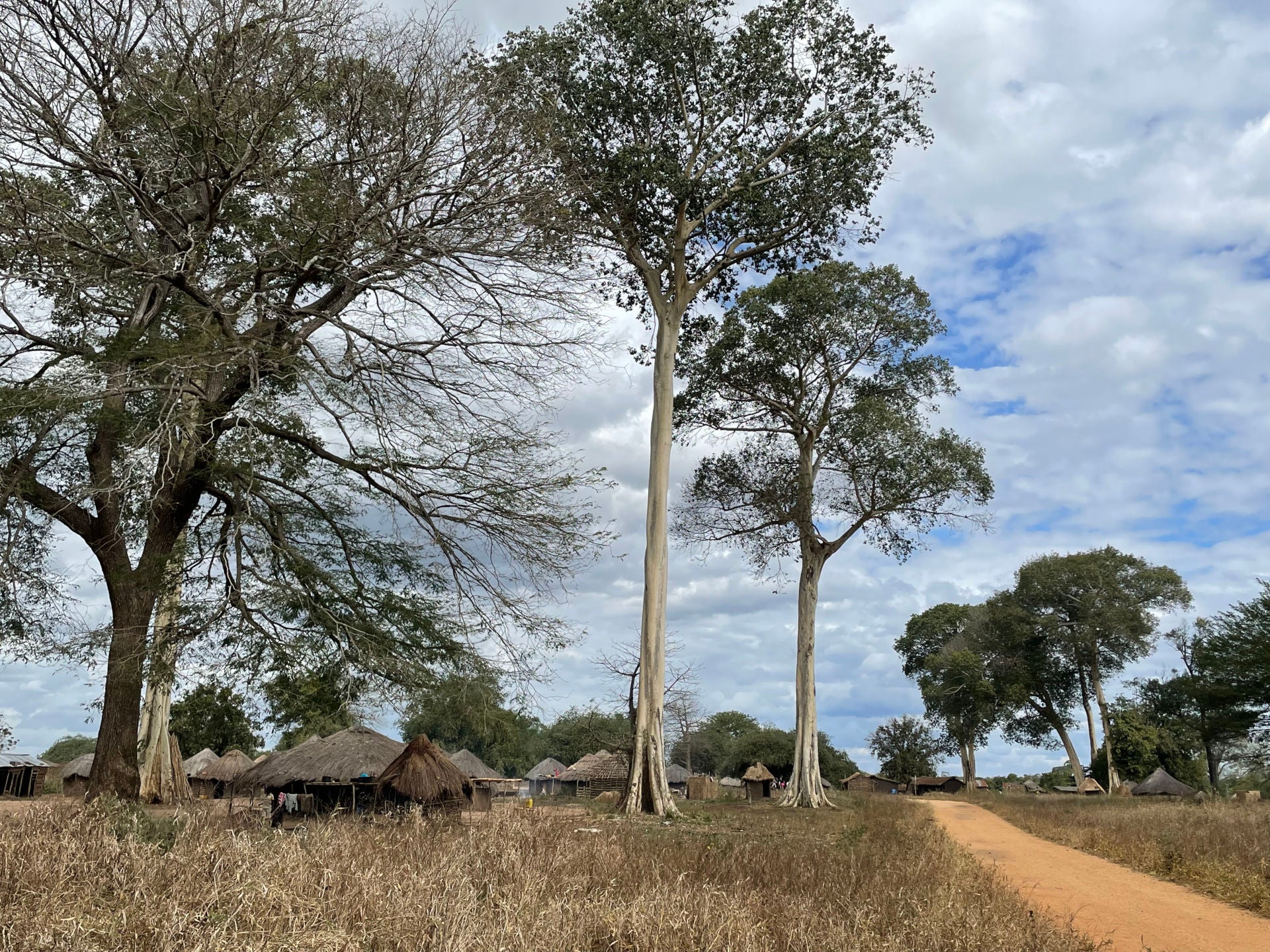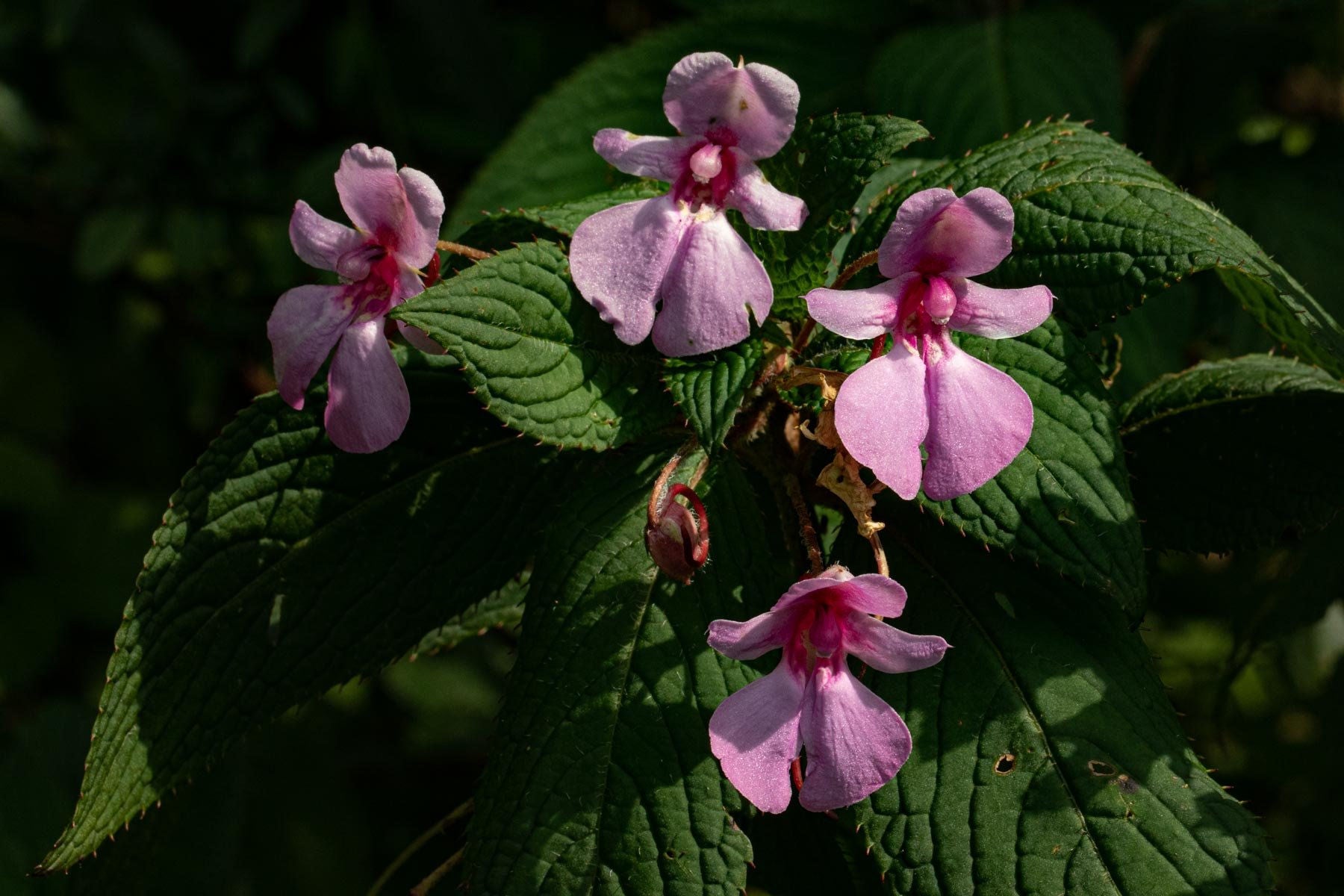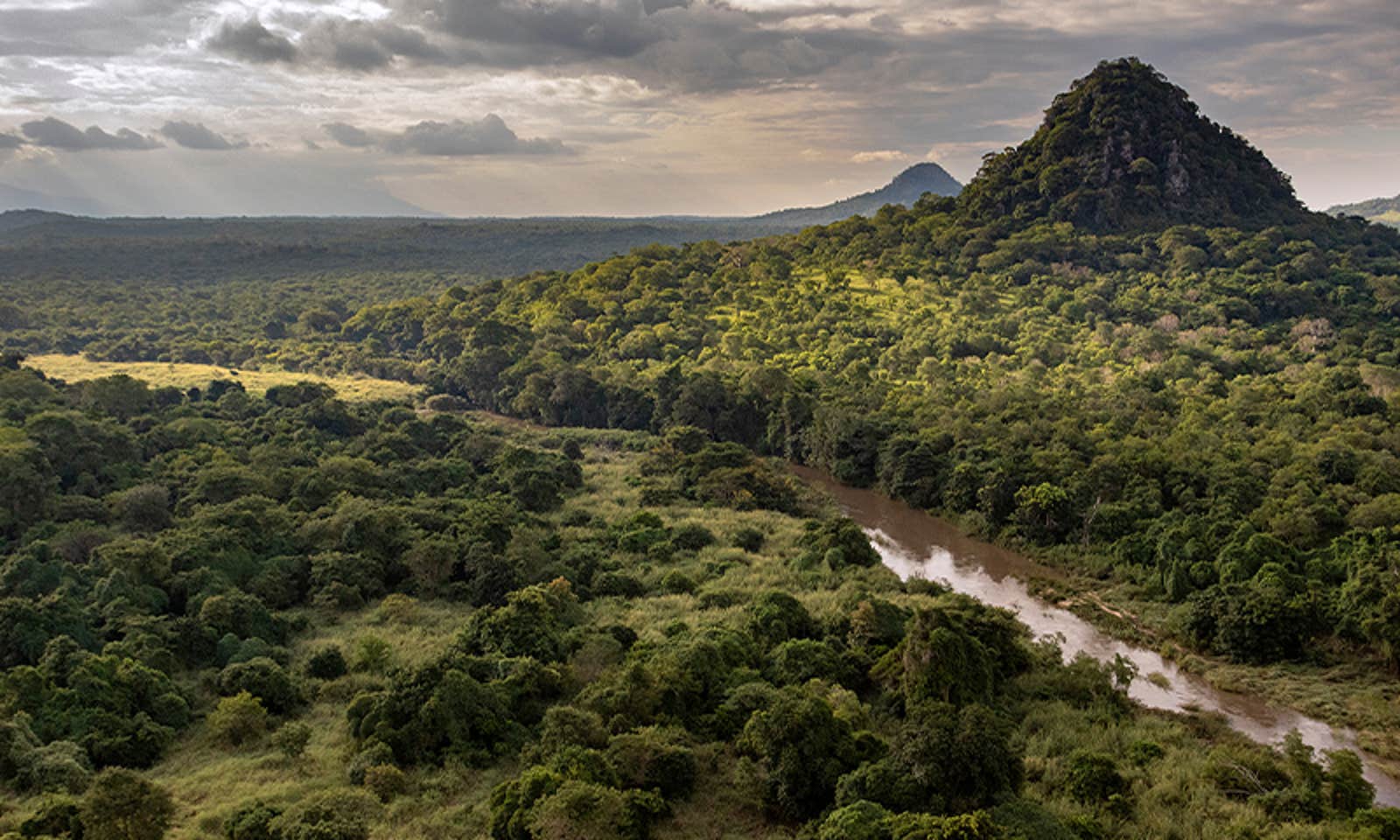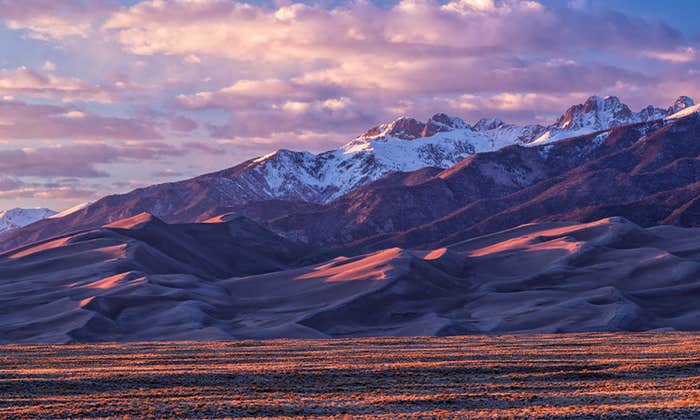
Marc Stalmans, the director of science at Gorongosa National Park in Mozambique, has been walking the vast Gorongosa National Park for 17 years. However, he still gets a kick out of the potato bush, Phyllanthus reticulatus. Every time he walks by the plant in the early evenings and gets a whiff of the plant’s uncanny smell, which is very close to the actual smell of mashed potatoes, it makes him smile—and he gets a little hungry. He says this smell is not pervasive in the environment, but it is a characteristic scent of Gorongosa.
He’s out in the bush to ensure the continuous recovery of its wildlife and infrastructure. The park had been devastated during the country’s civil war (1977-1992), when soldiers lived there and killed most of the animals. In 2004, Greg Carr and the Carr Foundation formed the Gorongosa Restoration Project non-profit organization in a public-private partnership with the Mozambican government to rehabilitate, expand, and co-manage the park. It was two years later that Stalmans, who earned a master’s in botany and a Ph.D. in landscape ecology from the University of the Witwatersrand in South Africa, began consulting with them, until he joined full time in 2012. These years of critical and spectacular restoration in one of the largest parks in Africa have worked, and the species have rebounded into a coherent ecological matrix.
I’ve seen animals in landscapes still smoldering, eating ash beds because they’re so rich in minerals.
In 2010, the park was expanded to include Mount Gorongosa and its rainforest, an important development for the entire ecosystem. The reintroduction of animal species has not only helped restore interactions between plants and animals but also the insects and microorganisms that maintain the health of the park’s ecosystem. Stalmans and his team helped coordinate the scientific research of the park’s expansive biodiversity and ecology, while also training a new generation of Mozambican scientists and researchers. Today, Gorongosa’s restoration continues, but its success in reestablishing biodiversity is already an example to the world.
Nautilus spoke to Stalmans about balancing the recovery of Gorongosa’s plant and animal life, wildfires, and discovering new plants.
What kind of shape was the plant life at Gorongosa in when you first started?
It was obvious when we first started that the general habitat was in very good shape. It was just the animals that were missing. Gorongosa is located in the extreme southern part of the Great African Rift, and on those alluvial soils with good rainfall, and supplemented by frequent flooding—you get a tremendous productivity in terms of vegetation. Historically, that had supported a huge density of animals. However, those animals got depleted by 90 to 99 percent, depending on the species, during the war. For example, there were around 14,000 buffalo in that system before the war, but after the war there were fewer than 100 left. The wildebeest were around 6,000 before the war, and that was reduced to fewer than 15, a number we can be quite sure about.
There was just that lack of animals to graze the grass and to browse the trees and the shrubs, so the vegetation was even more overwhelming in its lushness in those days. Just after the early years, I’d go out in March or April, after the end of summer and the main rains, and you couldn’t see over the high grass layer. Over the years, that has come down. So, if you’re talking only from a plant perspective, I would say it’s perhaps less high and dense than what it was. That said, grazing is very beneficial for the system because that is what the plants are used to. It’s good for the grass layer to be grazed. That’s what you would expect. That’s how those systems have evolved. In the historical part of the park, there wasn’t much of an issue with plants, and that has continued. There were obviously external pressures. Some places, we were at risk of slash and burn agriculture, we had illegal logging, and we had people encroaching on the park to make fields. We have still got some of that, but that impact has been much reduced over time.

Has fire posed a problem in the African landscape?
Fire has historically impacted the park but, contrary to popular belief, didn’t negatively impact the trees and shrubs. The savannah system is very well adapted to fire, and although the immediate visual effects on the landscape may not be appealing, it is part of a larger process that is fundamental to the regeneration of the landscape. In the long run the fire will allow these plants to maintain their vigor and diversity. However, in the rainforest, on the other side of Gorongosa Mountain, fire is extremely detrimental, and this is why slash and burn agriculture can be so damaging to the ecosystem there. You need a very nuanced kind of story about fire.
And what about the animals? What is the impact of the fires on the animals’ lives and behavior?
Fire can also impact the movement of the animals in the park. Where there is fire, the animals may temporarily shift locations because there won’t be grass, or if the fire is not very hot, they might move toward it. I’ve seen animals in landscapes still smoldering, eating ash beds because they are so rich in minerals. There’s also always some grass or shrubs that have been barely touched by the fire. It is dependent on the fire’s intensity; either everything has been removed because it was too hot for anything to survive, or it can be very patchy, and can still supply subsistence.
The plant resources are being protected by virtue of protecting the animals; the two go together.
How do you decide which species in the park need a hand in their recovery?
Princeton University has a strong research program, and they’re looking at the diet preferences, local plant biodiversity, optimal environmental conditions, and so on, and providing the park with data to help maintain wildlife recovery. We know which animal species were present from historical records. We have all the animals back except the white and the black rhino, as well as roan antelope and tsessebe. These we will need to reintroduce. Otherwise, we have the full complement back except that the proportions of animals are quite different from historical terms.
Can you give us an example?
Now, there is a dominance of waterbuck. Probably the biggest waterbuck population in Africa with around 60,000 individuals as counted in November last year, so they’re much more numerous now than they were historically. While, for example, species like zebra and wildebeest are still a lot less numerous than they were previously. So those are the imbalances. I think proportionally, although everything got depleted during the civil war because of illegal hunting, some species like waterbuck survived in slightly higher numbers. Then when the illegal hunting pressure diminished, they were able to just rebound a lot faster. If you take, for example buffalo, they were reduced very substantially, and they’re big animals, so they take a longer time to mature. Although we introduced 200 buffalo, they have a protracted gestation period and have a longer interval between calves, so they took a lot longer to rebound.
Over time, it’ll probably balance, as we believe buffalo are much better competitors than waterbuck. So once the buffalo numbers are substantial, they’re going to start out-competing the waterbuck, and I would expect in a few years’ time, the waterbuck to be on a downward curve while the buffalo is still on the upward curve. But that’s where research and monitoring are essential. Whether that’s true or whether we get a kind of new equilibrium that’s being permanently fixed, we don’t know that yet.
Intrinsically, waterbuck are quite demanding in terms of the quality of the diet that they require, eating mostly grasses and requiring easy access to water. Buffalo will eat grasses, herbs, weeds, and sedges, while in leaner times they will eat bark, leaves, and more. They are flexible and can survive on a slightly lower-quality diet. The buffalo are also less prone to predation because they’re such big animals. Our predator numbers are really increasing very well and that, partnered with the competition for plant resources, will probably mean the buffalo will come out on top and the waterbuck will not.

Why are the animals’ recoveries important for the park’s plant life?
There was very little pressure on the Gorongosa plant world for many years. Previously, people saw the park principally as a food resource, as a larder. As I mentioned, there was some encroachment, some people doing slash and burn agriculture, but that was mostly on the periphery, a little bit of illegal logging. During the war, people were displaced and so this people-pressure on the plant resources dissipated. Now, because of the recovery of the animals, there is an increased ranger presence throughout the park, which means that despite the increasing human population, we are better protected from further encroachment and illegal logging. When you look at the landscapes just outside the boundaries of the park, you can very clearly see the poorer condition of the environment because of the expansion of agricultural and human activities. This contrast makes it clear that the park is actually very good for the vegetation. The plant resources are being protected by virtue of protecting the animals; the two go together.
Do you have a favorite type of tree in Gorongosa?
Sterculia appendiculata is a deciduous tree that is also called “tall sterculia.” It’s a very, very tall tree with this smooth, whitish bark. It’s very striking. It sheds its leaves in the dry season and its flowers reappear across its rounded crown around the start of the rainy season before the leaves and fruit. It grows around the edges of dry woodlands, often on or around termite mounds.
Termites locate their mounds outside of any flooding influence, generally in open savannah. These mounds improve the texture of the soil, improve water flow, and make it a nutrient-rich area. Many times, these areas support little forests of various trees, creating a very different composition that wouldn’t be present in the matrix of the open savannah otherwise. Animals always prefer to graze or browse on those termite mounds because it offers a better nutrient return for them. The animals, including pangolins, who eat termites and trees like the Sterculia Africana, are making use of these nutrient-rich patches that are so important in the African savanna ecosystem.
What are we learning about plant diversity in Gorongosa?
In this time of mass biodiversity loss, new plants are still being found. Since we started with the restoration project, the biological exploration of Mount Gorongosa revealed a beautiful endemic plant species called Impatiens wuerstenii. This flowering perennial forb is found in rocky shaded areas, in the margins between the forests and the grasslands.
There’s also a limestone substrate endemic flowering evergreen tree species that was found on the eastern side of the park called Cola cheringoma (Sterculiaceae). It’s a big tree with a very narrow distribution and was only very recently described.
These recent findings are why Gorongosa is an endlessly fascinating place. It has a very rich diversity, in part because of the heat and the rainfall, and is one of those very dynamic places that changes quickly. This is why, with a little assistance, Gorongosa was able to make such an extraordinary comeback. ![]()
Gayil Nalls, Ph.D., an interdisciplinary art and theorist, is the creator of World Sensorium and founder of the World Sensorium/Conservancy.
Lead photo by Piotr Naskrecki
The Nautilus Gorongosa Series is published in partnership with the Howard Hughes Medical Institute’s Science and Educational Media Group.

























